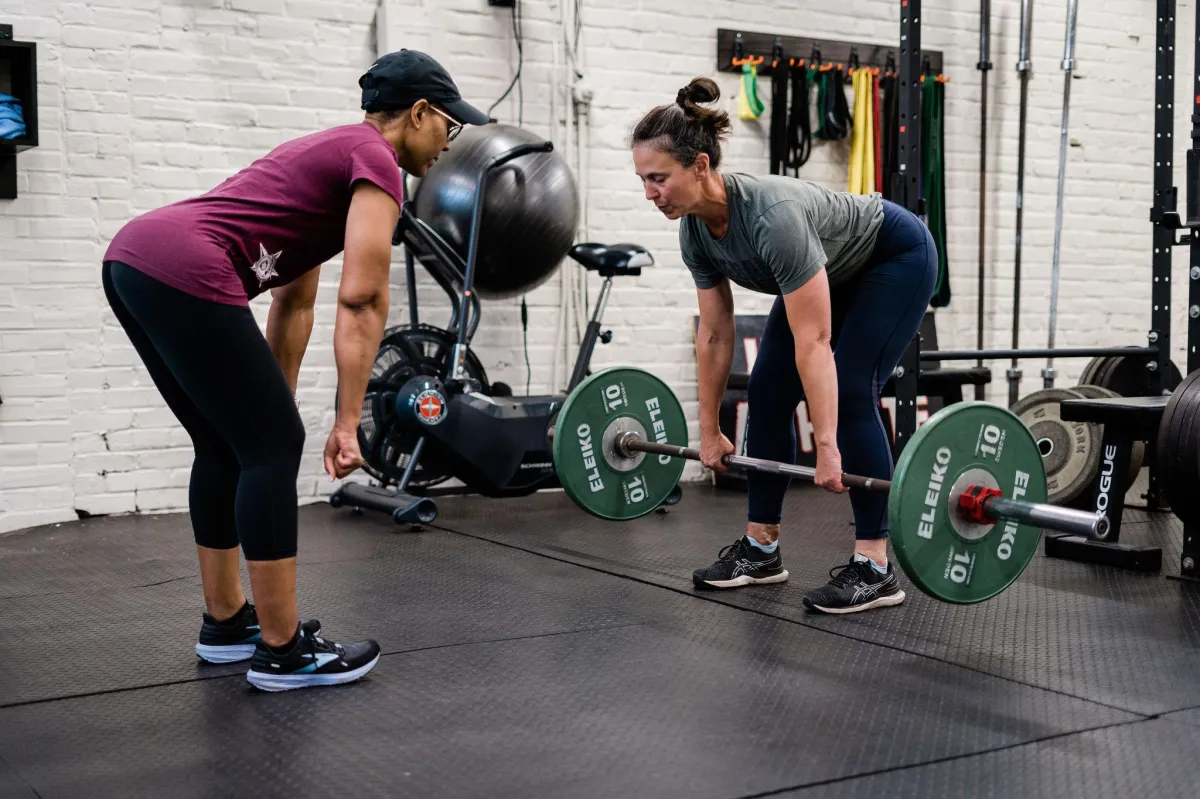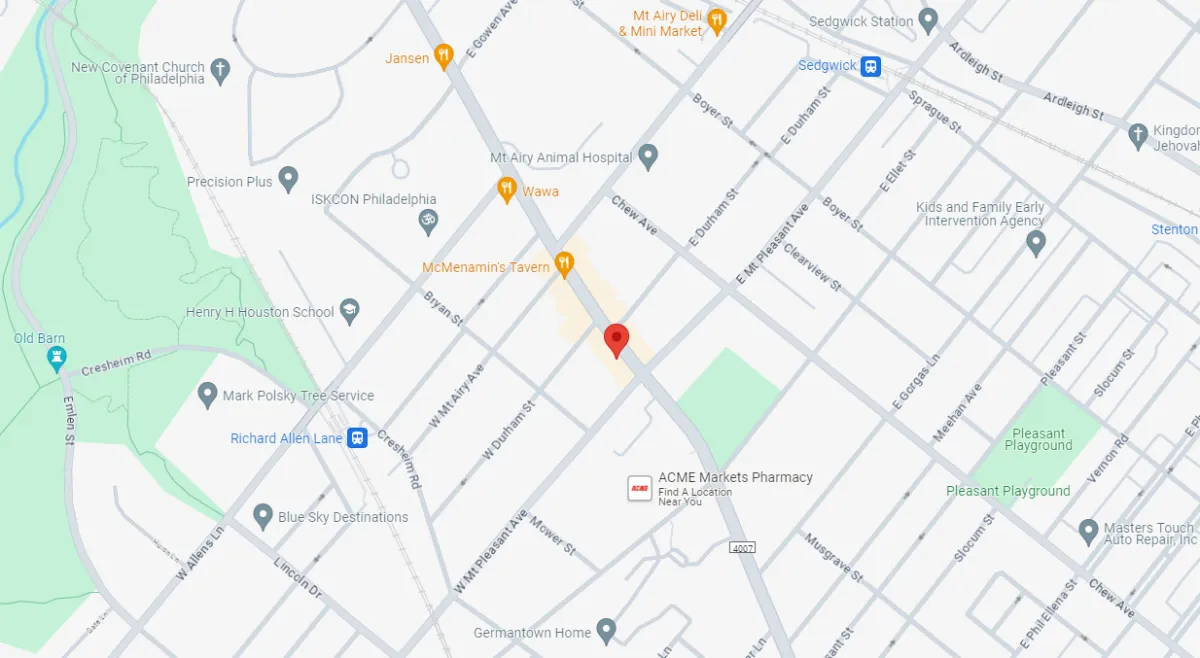HEALTH & FITNESS BLOG IN MT AIRY
HEALTH & FITNESS BLOG

Regain Control: Manage Menopause Symptoms through Exercise
Understanding Menopause
Navigating the journey of menopause can be a challenging experience, but it's also a natural part of life. Understanding what menopause is and the common symptoms that accompany it can help you feel more in control and prepared for this stage of life.
What is Menopause?
Menopause marks the end of a woman's reproductive years, typically occurring in her late 40s or early 50s. It's defined as the point when a woman hasn't had a menstrual period for 12 consecutive months. This phase is characterized by a significant decrease in the production of hormones such as estrogen and progesterone, which can trigger a variety of symptoms.
Common Symptoms of Menopause
The symptoms of menopause can vary from woman to woman. However, there are several common symptoms that many women experience. These include:
Hot flashes and night sweats: Sudden feelings of intense heat in the body, often accompanied by sweating and flushing.
Sleep disturbances: Difficulty falling asleep or staying asleep, often due to night sweats.
Mood changes: Feelings of sadness, irritability, or anxiety.
Vaginal dryness: Dryness, discomfort, or pain during sexual intercourse.
Weight gain: Particularly around the abdomen due to changes in metabolism.
Understanding these symptoms can help you better manage them. An effective way to alleviate these symptoms and improve your overall health is through exercise. Regular exercise can help balance hormone levels, improve mood, support weight management, and promote better sleep – all crucial factors in managing menopause symptoms through exercise.
In the upcoming sections, we'll delve into the benefits of exercise during menopause and discuss different types of exercises that can help manage these symptoms, including the role of strength training for women over 50 and the advantages of considering personal training for women over 50.
Managing menopause is not just about enduring symptoms – it's about embracing this stage of life and striving to stay active, healthy, and strong. With the right knowledge and resources, you can make this phase of your life a time of empowerment and well-being.
The Power of Exercise
Taking control of menopause symptoms is possible, and exercise is one powerful tool in your arsenal. Not only does it help manage the physical symptoms, but it also contributes significantly to your overall well-being during this phase of life.
Benefits of Exercise for Menopause
Exercise during menopause can offer a host of benefits beyond just symptom management. Regular physical activity can help you maintain a healthy weight, strengthen your heart and bones, improve your mood, and boost your overall energy levels.
In the table below, various benefits of exercising during menopause are enumerated:
To get the most out of your exercise routine, it's important to consider your fitness goals for women over 50 and incorporate various types of workouts, including strength training and cardiovascular exercises.
How Exercise Helps Manage Menopause Symptoms
Managing menopause symptoms through exercise is a practical and natural approach. Regular physical activity can help reduce hot flashes, improve sleep, and decrease joint pain and stiffness.
Here's how:
Hot Flashes - While the mechanism isn't fully understood, regular exercise seems to reduce the frequency and severity of hot flashes for many women.
Sleep - Regular physical activity, particularly in the morning or afternoon, can improve sleep quality.
Joint Pain - Low-impact exercises can help manage joint pain and stiffness, common complaints during menopause. Visit our article on managing joint pain through exercise for more information.
Mood and Mental Health - Exercise releases endorphins, often known as 'feel-good' hormones, which can help combat mood swings and depression.
Bear in mind that everyone is unique, and the same exercise regime may not work for everyone. It's important to listen to your body and adjust your activities as needed. If you're interested in a personalized approach, consider exploring personal training for women over 50. By working with a professional, you can create a fitness plan tailored to your needs and capabilities, making your journey through menopause a more positive experience.
Types of Exercises for Menopause
To help in managing menopause symptoms through exercise, it's crucial to incorporate a variety of workouts into your routine. This ensures your body gets a comprehensive workout, reaping the benefits from different forms of physical activity. Let's delve into three categories of exercise that are particularly beneficial during menopause: strength training, cardiovascular exercise, and balance and flexibility exercises.
Strength Training
Strength training, such as weightlifting, is a key component of any exercise routine, especially for women over 50. It aids in maintaining muscle mass, improving bone density, and managing weight - all crucial factors during menopause.
From resistance bands to weights, there are numerous ways to incorporate strength training into your routine. If you're new to this form of exercise, consider starting out light and gradually increasing your weights as your strength improves. For more insights, visit our comprehensive guide on strength training for women over 50.
Cardiovascular Exercise
Cardiovascular exercise, also known as cardio, is an excellent way to keep your heart healthy and manage your weight, which can be particularly challenging during menopause. Activities like jogging, walking, swimming, or cycling can elevate your heart rate and improve your cardiovascular health.
Start with moderate-intensity cardio exercises, gradually increasing the intensity as your fitness level improves. Regular cardio can also help boost your mood, which can be beneficial in managing mood swings associated with menopause. For some cardio workout ideas, check out our article on workout routines for women over 50.
Balance and Flexibility Exercises
As we age, maintaining balance and flexibility becomes increasingly important. Exercises that focus on these aspects, such as yoga or Pilates, can help improve posture, prevent falls, and increase mobility.
These exercises can also help manage joint pain, a common symptom of menopause. Incorporating stretching routines into your fitness plan can help improve flexibility and ease joint discomfort. Visit our article on improving flexibility for women over 50 for some helpful tips.
Remember, the most effective exercise routine is the one you enjoy and can stick to in the long run. Whether you're lifting weights, jogging, or practicing yoga, the key is consistency. And don't hesitate to seek advice or assistance from a professional if you're unsure of where to start. Our personal training for women over 50 program could be just what you need to kickstart your fitness journey during menopause.
Personal Training for Women Over 50
Navigating the path of fitness after 50, especially during menopause, can sometimes feel challenging. This is where personal training comes into play, offering a tailored approach that can guide you in managing menopause symptoms through exercise.
Why Consider Personal Training?
As you embark on your fitness journey, you might wonder, why should I consider personal training? Personal training provides a customized approach designed to meet your individual needs and fitness goals. A personal trainer can provide you with a structured and efficient workout plan, taking into account your current fitness levels and desired outcomes.
One of the most significant advantages of personal training is the professional guidance you receive. A personal trainer can correct your form and posture, reducing the risk of injuries and ensuring that you get the most out of your workouts. They can also provide motivation, accountability, and support, helping you stay on track with your fitness goals. To learn more about the benefits of personal training, check out our article on personal training for women over 50.
Benefits of Personal Training for Menopause
Personal training can be particularly beneficial for managing menopause symptoms. Regular exercise can help alleviate common menopausal symptoms such as hot flashes, mood swings, and sleep disturbances. It also plays a vital role in maintaining healthy bone density, which is often a concern during menopause due to the decline in estrogen levels.
Here are some key benefits of personal training for menopause:
Customized Exercise Plan: A personal trainer can design a workout plan that targets your specific needs and concerns during menopause. This could include a mix of strength training, cardiovascular exercise, and balance and flexibility exercises.
Safe and Effective Workouts: With a personal trainer, you can ensure that you're performing exercises correctly and safely. They can adjust the intensity of your workouts as needed, helping you avoid injury and maximize results.
Motivation and Accountability: A personal trainer provides the motivation and accountability you need to stick with your exercise routine. They can help you set realistic goals, track your progress, and adjust your workout plan as needed.
Support and Guidance: Navigating menopause and the changes it brings can be challenging. A personal trainer can provide support and guidance, helping you manage menopause symptoms through exercise.
Personal training can be a valuable tool in your journey towards fitness and well-being during menopause. By working with a personal trainer, you can develop a sustainable exercise routine that not only helps manage menopause symptoms but also enhances your overall health and vitality. For more information on designing a fitness routine, check out our article on workout routines for women over 50.
Creating Your Exercise Plan
Formulating an exercise plan tailored to your needs is a key step in managing menopause symptoms through exercise. This section focuses on the considerations for your fitness routine, tips for getting started, and how to maintain your exercise routine for long-term benefit.
Considerations for Your Fitness Routine
Before you start your fitness journey, it's important to consider a few factors. These include your current fitness level, medical conditions, personal goals, and available time. Your workout routine should be challenging, yet achievable, and most importantly, enjoyable.
A well-rounded workout routine for managing menopause symptoms typically includes strength training, cardiovascular exercise, and balance and flexibility exercises. You may find our articles on strength training for women over 50 and workout routines for women over 50 useful in understanding the different types of exercises you can incorporate into your routine.
Tips for Getting Started
Starting a new fitness routine can be daunting, but don't let that discourage you. Here are some tips to help you get started:
Set clear and realistic goals: Having clear goals can motivate you and give you a sense of direction. Whether it's improving strength, flexibility, or managing menopause symptoms, your goals should be specific, measurable, attainable, relevant, and time-bound (SMART). For more on setting fitness goals, check out our article on fitness goals for women over 50.
Start slow and gradually increase intensity: If you're new to exercising, start with low-intensity workouts and gradually increase intensity as your fitness level improves. Overdoing it from the start can lead to injuries.
Consult a professional: Working with a personal trainer can provide you with a personalized workout plan, motivation, and expert guidance. For more information, refer to our article on personal training for women over 50.
Maintaining Your Exercise Routine for Long-Term Benefit
Consistency is key when it comes to reaping the benefits of exercise. Here are some tips to help you stick to your routine:
Find activities you enjoy: You're more likely to stick to your routine if you enjoy the activities. This could be anything from yoga, dance, walking, or weightlifting. Our article on weightlifting for women over 50 might spark some interest.
Schedule your workouts: Treat your workouts as important appointments. Set specific days and times for your workouts and stick to them.
Listen to your body: Rest when you need to and adjust your workout intensity based on how you feel. Remember, it's okay to have easy days.
Remember, exercise is just one piece of the puzzle when it comes to managing menopause symptoms. A balanced diet, good sleep, and stress management are equally important. Keep experimenting and adjusting until you find what works best for you. Your body will thank you!

Ready To Jumpstart Your Journey Today?
Click The Button Below To Learn More!
© 2025 Urban Athlete
|
|
© 2025 Urban Athlete




